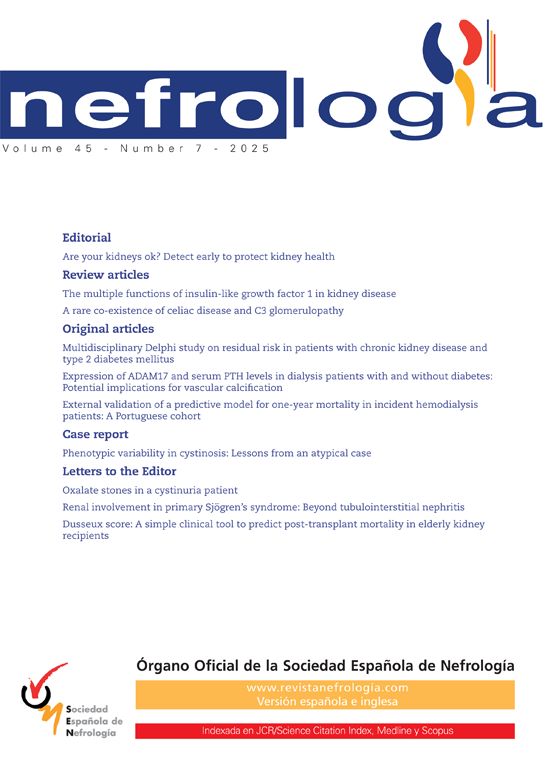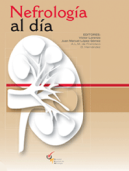We read with interest the article recently published in Nefrología entitled “Multicenter validation of the Kidney Failure Risk Equation (KFRE) in Spanish patients with advanced chronic kidney disease".1 This is an observational, retrospective, multicenter study that seeks to validate the KFRE equation with 4 and 8 variables at 2 and 5 years in patients with stage 4–5 chronic kidney disease (CKD G4+). This validation may help Spanish nephrologists introduce prediction models into their clinical practice as recommended by the KDIGO guidelines2 and, thus improve the daily practice of nephrology.
The KFRE has been extensively validated externally in different countries and populations, as the authors of the study report.3–6 In the discussion section of the article, the authors note that it had not previously been validated in the Spanish population. However, our group already published an external validation study of both the KFRE and the Grams model in patients with stage 4 CKD in a Spanish center in 2024.7 This study was the first external validation of both models in the Spanish population. In our study we found that, in a non-North American population, the discrimination for the KFRE with 4 variables at 2 and 5 years, as assessed by the AUC, was higher than that reported in the study by Escamilla-Cabrera et al., and similar to other non-North American populations: 0.894 (95% CI 0.857−0.931) and 0.823 (95% CI 0.779−0.867), respectively. Furthermore, in our study, model calibration was excellent, with a Hosmer–Lemeshow test with p > 0.05 and a Brier score < 0.20 for both the KFRE model at 2 and 5 years and the Grams model.
We agree with the authors on both the strengths and limitations of their study. The fact that it is a multicenter study and that the equation has been validated with 4 and 8 variables and using not only the version corrected for non-North American patients but also the weighted equation, lends methodological strength to the conclusions. However, the exclusion from the analysis of patients who died from non-renal diseases and who were not candidates for renal replacement therapy could introduce selection bias, resulting in greater homogeneity in the predictor values. It has been reported that this homogeneity in predictors associated with initiation of renal replacement therapy in patients with stage 4 CKD may reduce the discriminatory power of the model,8 which could explain the poorer discrimination and calibration of the KFRE in their study. In fact, the reported AUCs were less than 0.8 (KFRE weighted with 4 variables at 2 years AUC 0.763 (95% CI 0.71−0.81) and KFRE weighted with 8 variables at 5 years AUC 0.763 (95% CI 0.71−0.81). It would have been interesting to include these patients in the analysis and to know the performance of the model under these conditions, without creating an overly homogeneous sample or underestimating the impact of mortality on the progression of chronic kidney disease.





